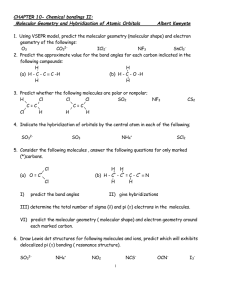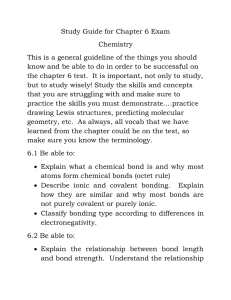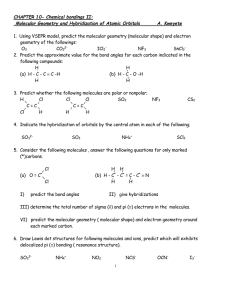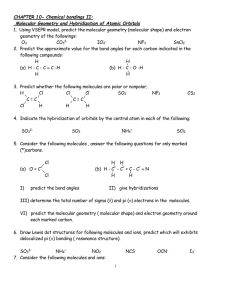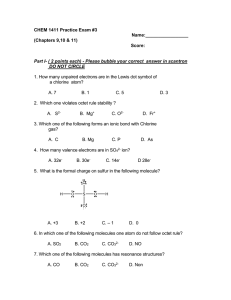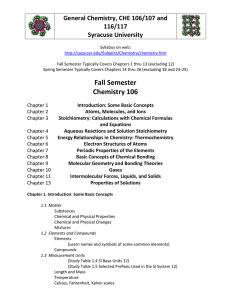1411 Chapter 9 Practice Problems.doc
advertisement
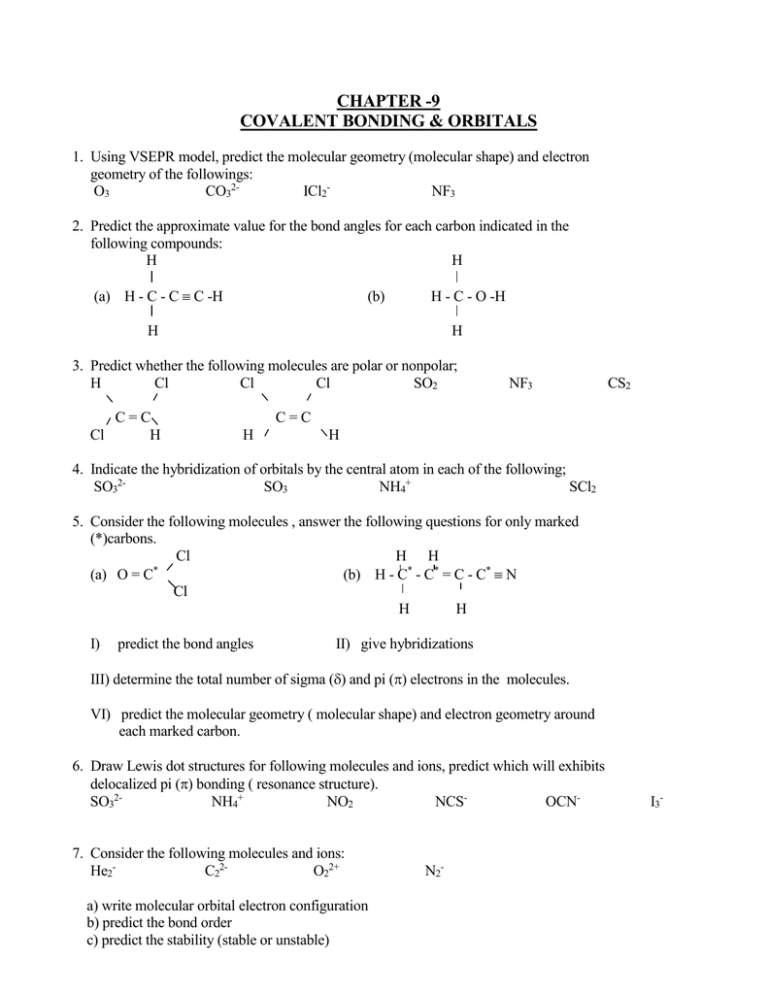
CHAPTER -9 COVALENT BONDING & ORBITALS 1. Using VSEPR model, predict the molecular geometry (molecular shape) and electron geometry of the followings: O3 CO32ICl2NF3 2. Predict the approximate value for the bond angles for each carbon indicated in the following compounds: H H (a) H - C - C C -H (b) H - C - O -H H H 3. Predict whether the following molecules are polar or nonpolar; H Cl Cl Cl SO2 Cl C=C H NF3 CS2 C=C H H 4. Indicate the hybridization of orbitals by the central atom in each of the following; SO32SO3 NH4+ SCl2 5. Consider the following molecules , answer the following questions for only marked (*)carbons. Cl H H * (a) O = C (b) H - C* - C* = C - C* N Cl H H I) predict the bond angles II) give hybridizations III) determine the total number of sigma () and pi () electrons in the molecules. VI) predict the molecular geometry ( molecular shape) and electron geometry around each marked carbon. 6. Draw Lewis dot structures for following molecules and ions, predict which will exhibits delocalized pi () bonding ( resonance structure). SO32NH4+ NO2 NCSOCN- 7. Consider the following molecules and ions: He2C22O22+ a) write molecular orbital electron configuration b) predict the bond order c) predict the stability (stable or unstable) N2- I3- 8. Consider CH3 , CH3+ , and CH3-, for each: a) draw Lewis dot structure b) predict electron geometry and molecular geometry c) using hybrid orbitals , describe the bonding ( orbital hybridization) d) predict the bond angles e) predict the polarity ( polar or non-polar) 9. Consider H2 , H2+ , H2- ; for each, a) draw energy-level diagram. b) determine total number of electrons. c) write Lewis dot structure. d) calculate the bond order. e) determine the magnetic properties(in terms of paramagnetic or diamagnetic). f) Compare the stability and arrange the in order of increasing stability. 10. Identify the following molecules or ions as stable or unstable. Explain why? Compare the stability. He2 He2+ O2 O2O22-
